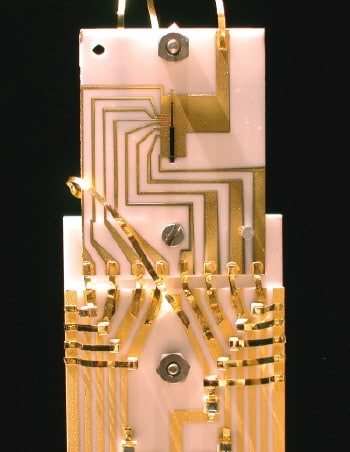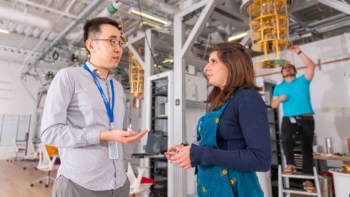Physicists in the US have demonstrated a method for correcting errors in quantum bits based on trapped ions (J Chiaverini et al. 2004 Nature 432 602). The result could bring large-scale quantum computers a step closer to reality.

Classical computers store and process information as “bits” that can have one of two values – “0” or “1”. A quantum computer, on the other hand, would exploit the ability of quantum particles to be in “superpositions” of two or more states at the same time. This means that a quantum computer could, in principle, outperform a classical computer for certain tasks.
However, quantum bits or “qubits” are very fragile and any noise in a quantum computer could change the state of a qubit quite easily, with adverse consequences for any calculations being performed by the computer. A practical quantum computer therefore needs to be able to correct these errors. Errors also occur in classical computers but they are much less frequent.
David Wineland and colleagues at the National Institute of Standards and Technology (NIST) in Colorado begin by creating a qubit that is a superposition of two hyperfine levels in the ground state of a trapped beryllium ion. They then entangle this “primary” ion with two “ancilla” ions, which are not used in the actual computation. Entanglement allows quantum particles to have strong correlations that are not possible in classical physics. In the NIST experiment it means that any errors that occur in one of the ions have an affect on the other two ions.
The NIST physicists then apply an artificial error of known size to their system, before disentangling the three ions and measuring the quantum state of the two ancilla qubits. Depending on the result of this measurement, they are able to determine what needs to be done to return the primary qubit to its initial state.
“The primary qubit can be corrected and restored as if an error never happened,” says John Chiaverini of NIST. “In principle, this method can be repeated indefinitely, which is a necessity of large-scale computation.” Another challenge is to correct all sorts of errors and not just the specific spin rotation applied by the NIST team.



